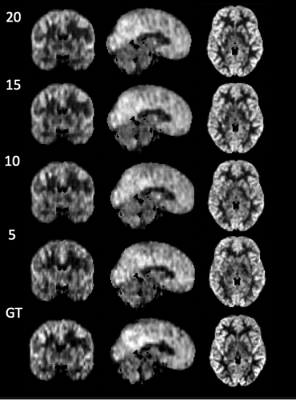Qinyang Shou1, Chaitanya Gupte2, Danny JJ Wang1, and Hosung Kim2
1Laboratory of Functional MRI Technology (LOFT), Stevens Neuroimaging and Informatics Institute, University of Southern California, Los Angeles, CA, United States, 2Neuroimaging with Deep Learning Lab (NIDLL), Stevens Neuroimaging and Informatics Institute, University of Southern California, Los Angeles, CA, United States
1Laboratory of Functional MRI Technology (LOFT), Stevens Neuroimaging and Informatics Institute, University of Southern California, Los Angeles, CA, United States, 2Neuroimaging with Deep Learning Lab (NIDLL), Stevens Neuroimaging and Informatics Institute, University of Southern California, Los Angeles, CA, United States
Our model combining CNN with Convolutional LSTM for spatiotemporal ASL denoising can achieve an SNR improvement with fewer input time steps, which shows a potential to reduce the scan time for ASL acquisition.

Figure1. Network structure of the denoising model. The network is consisted of a local pathway and a global pathway. The local pathway is combined with five layers of 3D convolutional layers and one 2D ConvLSTM layer and a 3D convolutional layer at the end. Inputs to the network are several perfusion image series and the outputs are the denoised perfusion image.

